
We have 2 wastewater lines, one for black water (faecal matter) and one for grey water (wastewater from shower, sink and washing machine). Hidden almost invisibly underground, in the foreground the septic tank for black water and in the background the gray water tank for leachate treatment. Coincidence? The colors of the two containers match their use - Black Water and Grey Water. The blue pipe is for an aerobic system to inject oxygen into the treatment tank. An aerobic system injects oxygen into the treatment tank. The additional oxygen increases the natural bacterial activity in the system, which then provides additional treatment for the nutrients in the wastewater.
Because we live in a rural area, we don't have municipal sewers.
The septic tank of our on-site sewage system connects directly to the three toilets to collect black water. The septic tank is waterproof and buried underground. The main task of the septic tank is to remove bacteria before water is discharged from the septic tank to the leachate treatment tank. In the septic tank, solids settle to the bottom. Grease and organic matter rise to the top, forming a layer of foam. The water is separated at the center of the septic tank and flows to the soaking tank.
The gray water tank is used for soaking and collects wastewater from sinks, washing machines, showers and dishwashers. We do not use gray water for flushing toilets or watering the garden, but direct it into the treatment tank to return the wastewater to the groundwater. Most of this water treatment takes place in the ground beneath the tank.
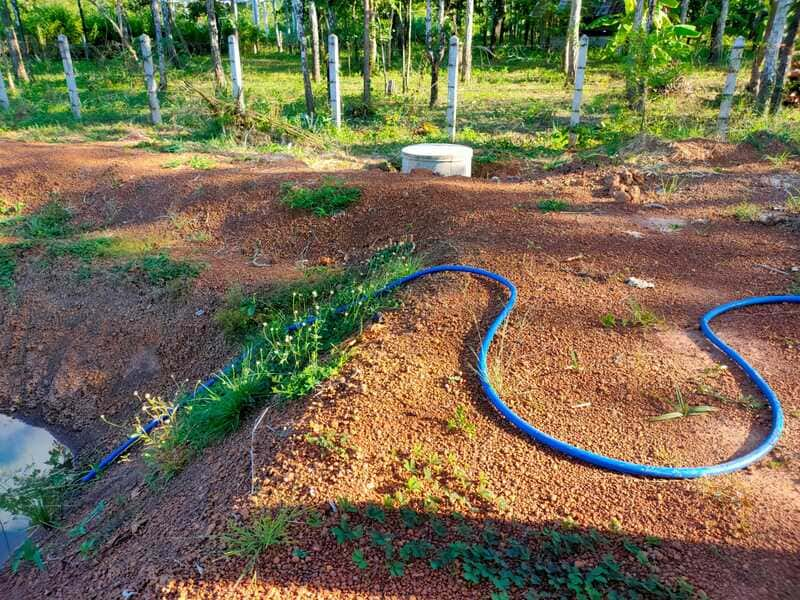
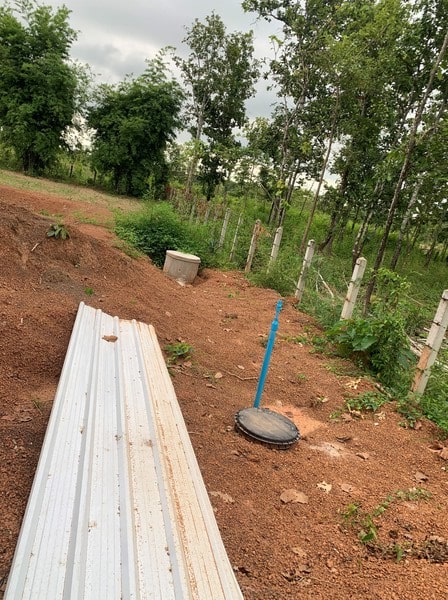
The septic tank for onsite wastewater treatment, also called tank for black water.
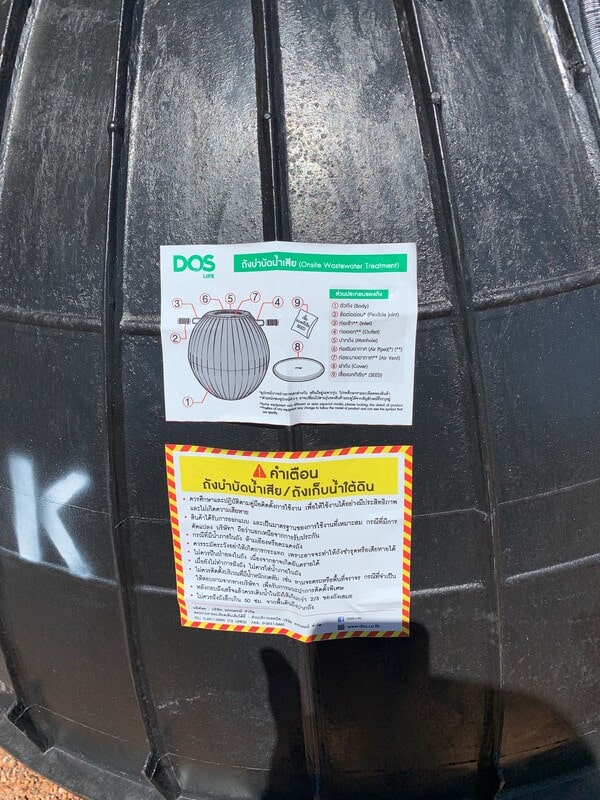
Regular maintenance and inspections are important, our nose is also a good inspection tool. A large rotating cap on the tank is used for inspection. Regular pumping out, about every five years, removes any remaining solids that cannot be broken down in both tanks.
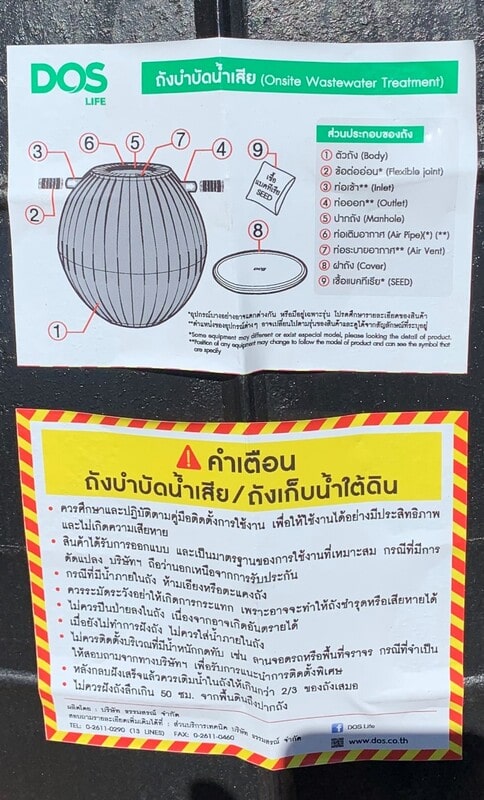
Some poor instructions and information about the tank.
The most informative they tell: After the burial is completed, the water in the tank needs to be filled more. The tank should not be buried deeper than 50 cm from the ground to the mouth of the tank, always 2/3 of the tank. ! Someone must think about the meaning.
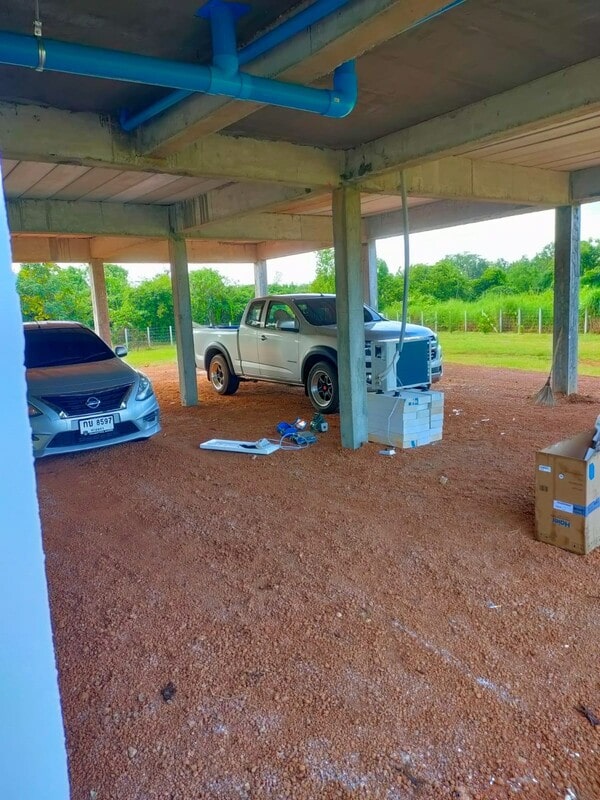
The thick pipe in the picture is used for black water, the thin pipe for gray water.
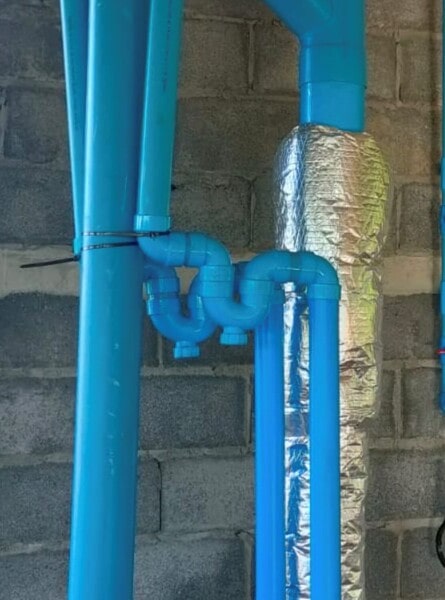
The gray water pipes have a siphon that prevents odor build-up from the drain and is also very useful for catching sand or hair from the shower. We place the siphon at a height of 1.5 meters, so that you can easily reach it. At first they wanted to place it close to the ceiling.
Unfortunately, after some time it turned out the gray water tank was undersized and the water could not seep away quickly enough. The reason for this was an impermeable layer of clay at a depth of around 3 meters. This created an undesirable situation. First, both tanks were pumped empty and cleaned. A long ditch was then dug to collect enough water. The ditch was planted with reeds and other aquatic plants. A pump was installed in the gray water tank to prevent overflow by pumping the excess water into the ditch.
The tanks are pumped dry and cleaned.
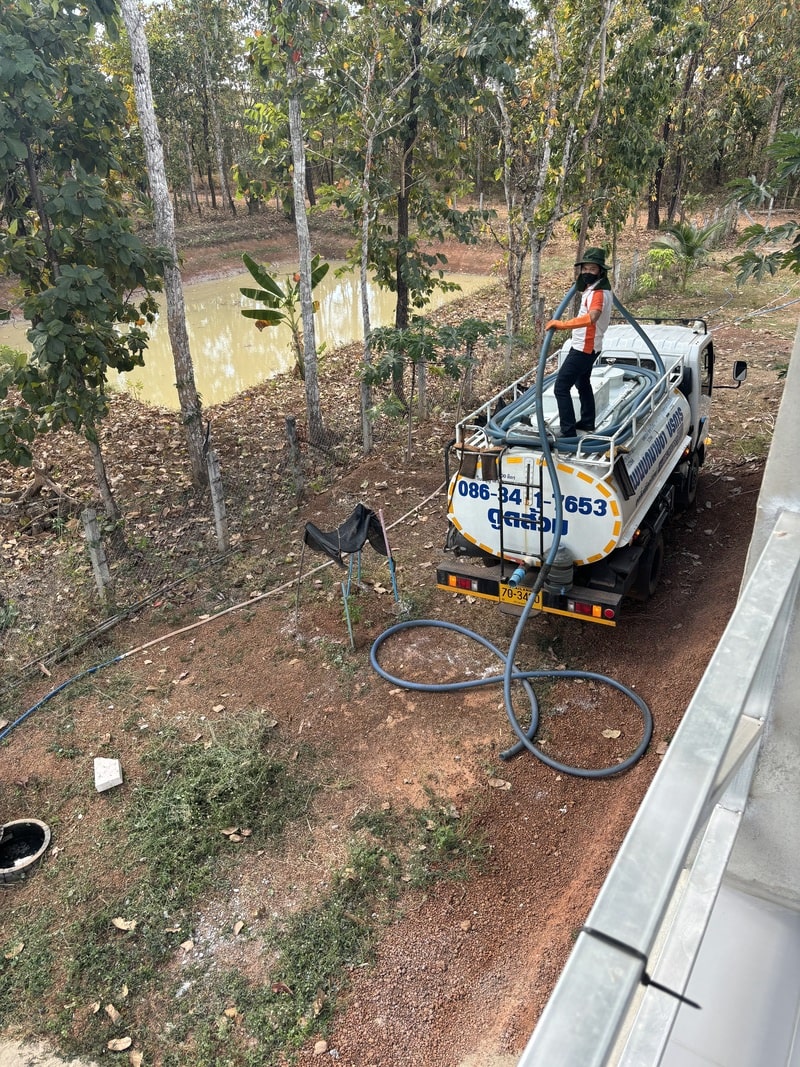
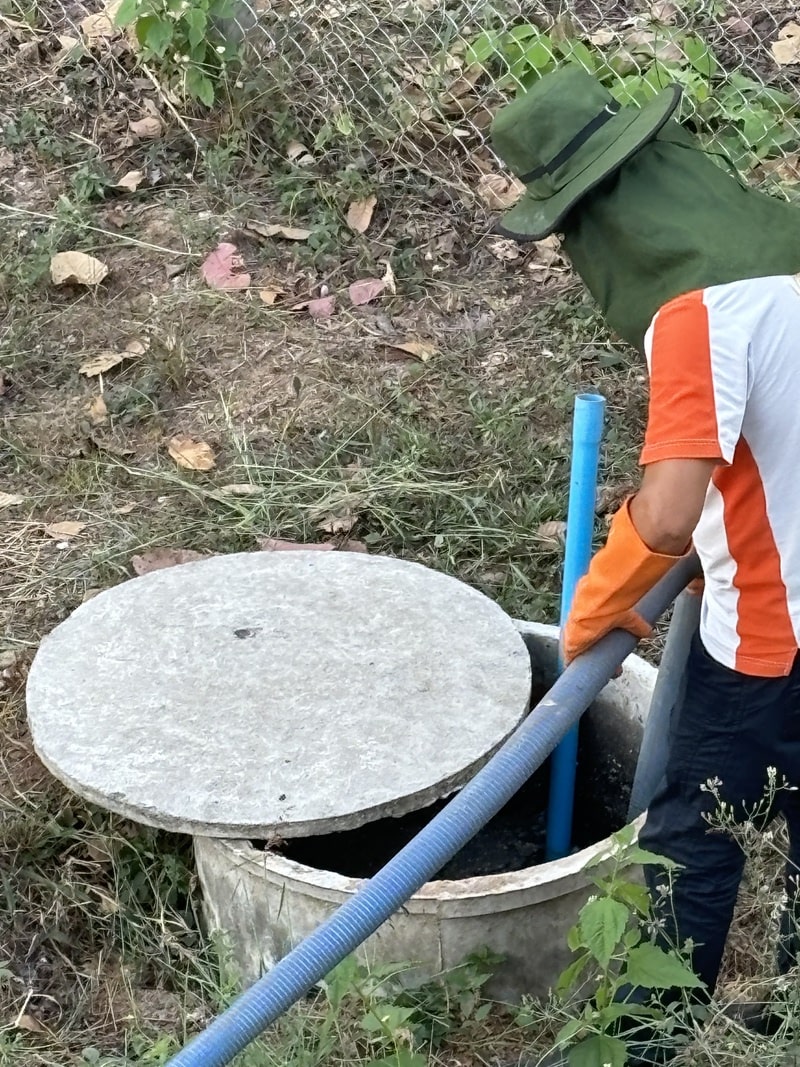
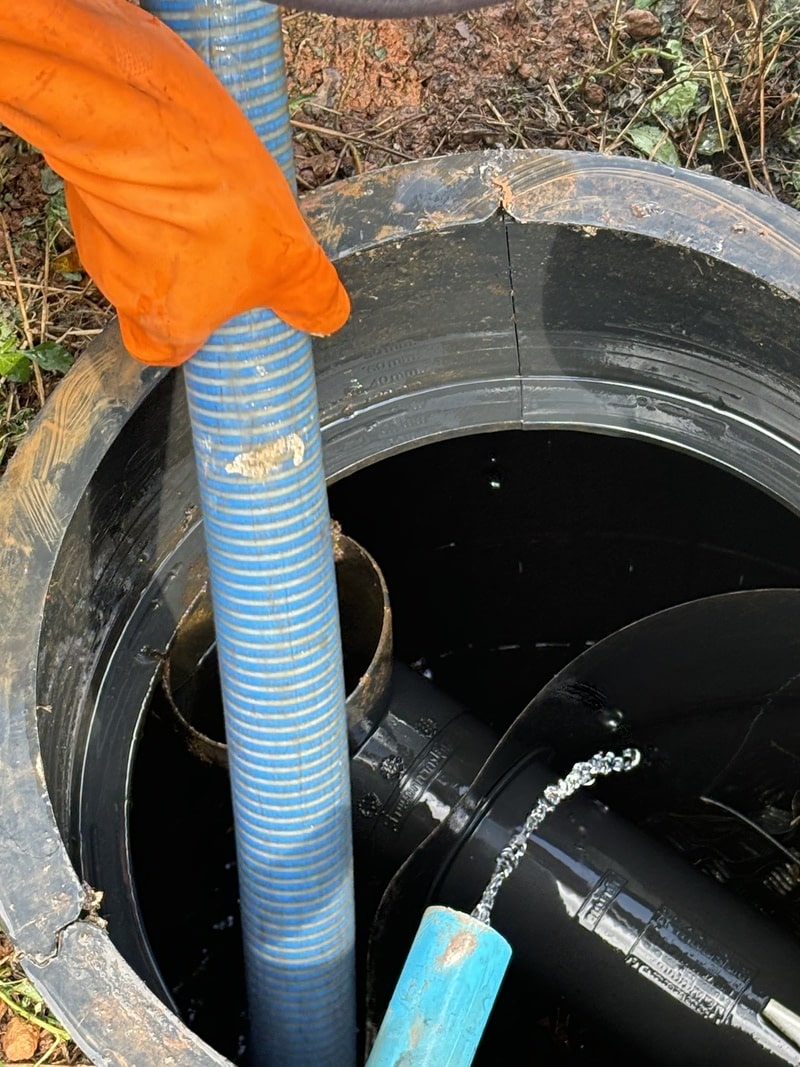
A long ditch to collect enough water.
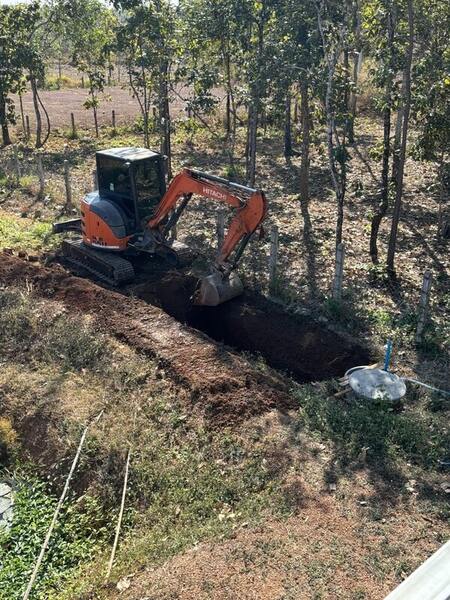
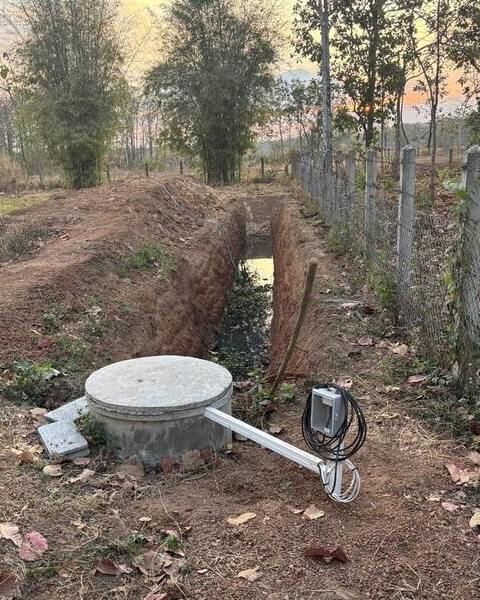
Later we expand the trench to more or less automatically supply the bamboo trees with sufficient water in the dry season, as both bamboo trees have lost all their leaves without vital water.
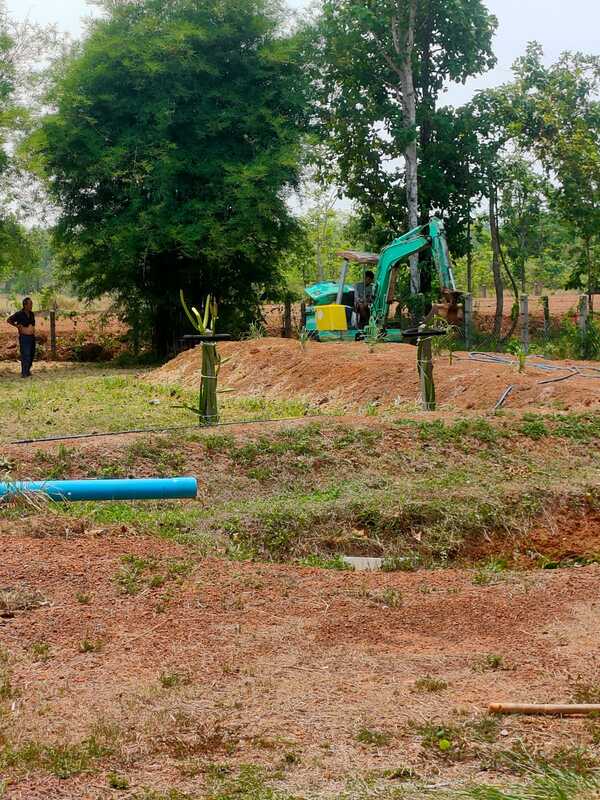
Thailand pictures and videos can be used and shared with others if the originated page is credited. For credit use this link: ThaiHome.pics Thank you! | Q&A
Content last change: June 30 2024